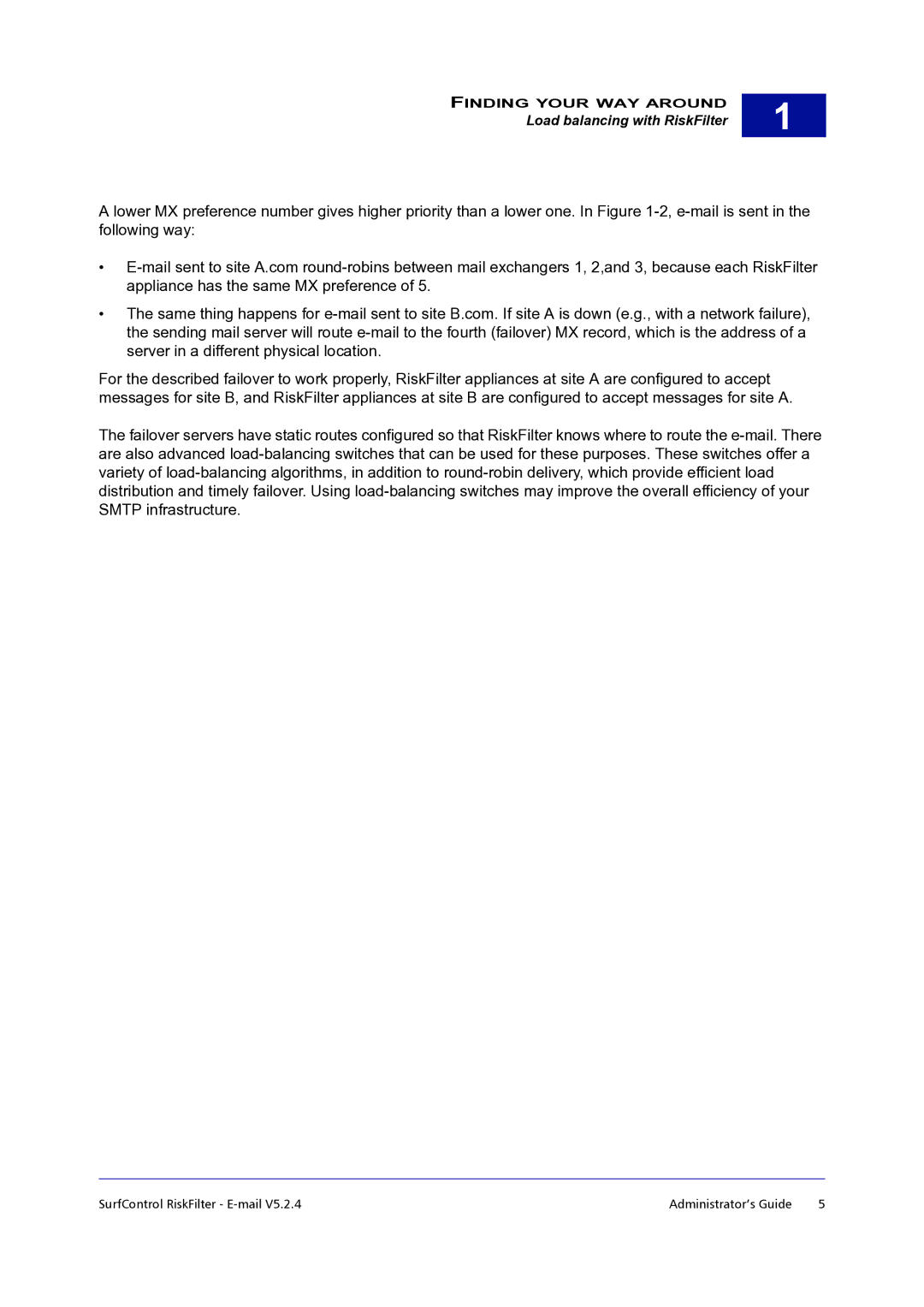
FINDING YOUR WAY AROUND
Load balancing with RiskFilter
1
A lower MX preference number gives higher priority than a lower one. In Figure
•
•The same thing happens for
For the described failover to work properly, RiskFilter appliances at site A are configured to accept messages for site B, and RiskFilter appliances at site B are configured to accept messages for site A.
The failover servers have static routes configured so that RiskFilter knows where to route the
SurfControl RiskFilter - | Administrator’s Guide | 5 |
